The solar storm event on October 20 has become somewhat of a mystery to astronomers and space weather physicists. The storm was triggered by a couple of coronal mass ejections (CME) that sideswiped the Earth and did not make head-on contact with the planet. They left the Sun one after the other in small eruptions, that should not have been carrying a high amount of solar matter or electromagnetic charge, but somehow its impact was far greater than some of the strongest CMEs we have seen in recent times. This is quite confusing as most forecasters had predicted a G1-class intensity for the storm, and while the storm itself was clocked at G1, the aurora display surpassed the intensity seen in that category. And now, a NASA image has been shared by a National Oceanic and Atmospheric Administration (NOAA) institute that shows the widespread impact of the solar storm.
3 MASSIVE solar storms smacked into Earth; More to come? NASA reveals the truth
04.10.2023 - 07:44 / tech.hindustantimes.com
Yesterday, an unstable sunspot named AR3450 was spotted coming towards the Earth. It was estimated that any explosions within this region that could lead to a coronal mass ejection (CME) would be geoeffective and could lead to a solar storm event. However, it has not gone off so far and no solar flare activity has been noted. While astrophysicists are keeping an eye on it, a new report has highlighted that the month of September witnessed as many as three separate solar storm events, with two of them being significantly intense to the point of reaching the mid-latitude regions. With the peak of the 11-year Solar Cycle, the Solar Maximum, approaching soon, will the month of October be worse? We take a look at the data from the NASA Solar Dynamics Observatory (SDO) to know what's coming our way.
As per NASA SDO data, at present, the Sun appears to be calm. Yet, images from the Atmospheric Imaging Assembly (AIA), an instrument aboard SDO that enables scientists to see the Sun in different wavelengths, at the 193 and 304 Angstrom wavelengths show some interesting development. A long and dark whip-like structure can be seen in the northern hemisphere of the Sun, indicating a particularly unstable region that can explode.
The data does not provide us an outlook for the entire month, as no solar storm prediction or forecast models can describe them with our current technology, it does point out that potential for solar activity remains as high as the previous month. This means there is a chance that October can also see spells of solar storm strikes.
According to a report by SpaceWeather.com, “The sun has been buffeting Earth with CMEs. In September there were three significant strikes, each one sparking a geomagnetic storm with mid-latitude auroras”.
There were two reasons that explain the high solar activity last month. The first is the approaching Solar Maximum which will witness the highest solar activity in the 11-year period. The second was the autumnal equinox which was on September 23. Based on historical data, it is known that during the equinox, solar activity always increases. A combination of both likely resulted in three separate geomagnetic storms.
It is impossible to tell whether October will have a similar impact, but early signs show that we could be looking at high solar activity in the first few days of the month. The only saving grace is that it may not all be Earth-directed.
While many space agencies from NASA with its Solar Dynamics Observatory (SDO) to the National Oceanic and Atmospheric Administration (NOAA) keep track of Sun-based weather phenomena, one that particularly stands out is the DSCOVR satellite by NOAA. The satellite became operational in 2016 and tracks different measurements
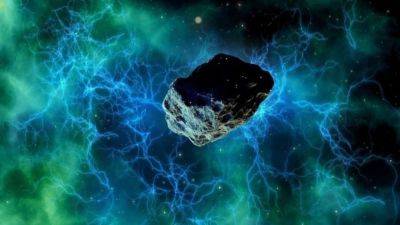
120-foot Asteroid 2023 UR1 to pass close to Earth today; know what NASA revealed
Do you know how many asteroids NASA scientists have tracked to date? Approximately 1,298,148 asteroids have been identified by NASA. The space agency employs a range of advanced ground and space-based telescopes for tracking and researching these cosmic rocks, primarily concentrated within the asteroid belt situated between the orbits of Mars and Jupiter. Telescopes and observatories such as NEOWISE, the Atacama Large Millimeter/submillimeter Array (ALMA), Pan-STARRS1, and the Catalina Sky Survey play pivotal roles in the study of asteroids and the mitigation of uncertainties surrounding their close encounters with Earth.
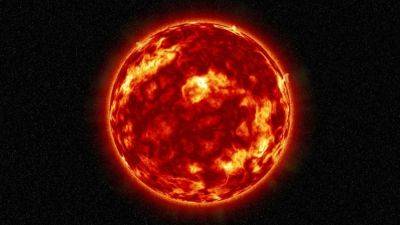
Magnetic filament eruption on the Sun may spark solar storm tomorrow, says NASA
On Monday, October 16, a powerful magnetic filament erupted on the Sun. In particular, the explosion of plasma took place on the active sunspot AR3467, which was earlier reported to have displayed signs of trapping a huge amount of delta energy. The eruption was so massive that it ejected solar matter and plasma into space, which is also known as coronal mass ejection (CME). The CME is now moving in the direction of Earth. While NASA models have assured that a direct hit is unlikely at this point, it is expected to sideswipe the planet, which is still enough to spark a solar storm. The storm is expected to arrive tomorrow, October 19.

600-foot asteroid to do a close flyby of Earth; NASA reveals size, speed, and more
Hazards like solar storms and asteroids constantly appear and pose threats to our planet. NASA diligently monitors Near-Earth Asteroids (NEAs) to safeguard our planet from potential impacts. When NASA's telescopes detect a new NEA, precise observations of its position in the sky are reported to the Minor Planet Center. Subsequently, the Center for Near-Earth Object Studies (CNEOS) utilizes this data to establish the most likely orbit of the asteroid around the Sun. To evaluate the risk of impact and the asteroid's orbit, NASA employs the innovative Sentry II system, featuring a unique algorithm. Sentry II strategically selects random points within the entire uncertainty region, enabling the program to pinpoint very low-probability impact scenarios. Recently, NASA has issued an alert concerning a colossal asteroid that is approaching Earth tomorrow:

Asteroid 2023 TT8 to get very close to Earth today, NASA reveals
Asteroids are abundant in space and as many as 1298148 have been discovered to date. To track and study these space rocks which are mainly present in the asteroid belt between the orbits of Mars and Jupiter, NASA has several advanced ground and space-based telescopes in place. NEOWISE telescope, Atacama Large Millimeter/submillimeter Array (ALMA), Pans-STARRS1 and Catalina Sky Survey are just some of the telescopes and observatories that help study asteroids and remove any uncertainties around their potentially close approaches to Earth.
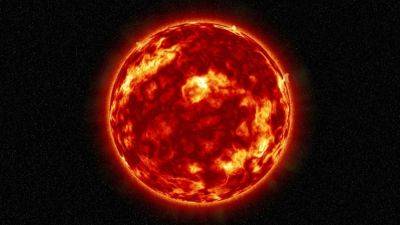
Ahead of solar eclipse, fast-moving solar winds to spark a powerful solar storm today on Earth
Yesterday, it was reported that a co-rotating interaction region (CIR) was forming near the magnetosphere of the Earth due to the intermixing of slow and fast-moving solar winds. The situation is set to worsen today, October 13, as fresh solar winds escaping from a worm-like coronal hole will soon strike the Earth and trigger a powerful solar storm event. This event is expected to take place just before the annular solar eclipse occurs in the early hours of October 14.

House-sized asteroid hurtling towards Earth for close approach, NASA reveals
With its advanced tech such as the NEOWISE telescope, Atacama Large Millimeter/submillimeter Array (ALMA), Pans-STARRS1 and Catalina Sky Survey, NASA has revealed details about an asteroid that will come close to Earth. An asteroid, given the designation of Asteroid 2023 TC1, is on its way towards Earth and could make its closest approach to the planet today, October 13.

Incoming CIR could spark solar storm on Earth TODAY; Know all about it
The Earth this month has seen quite a few impacts due to the solar activities on the Sun, including a couple of solar flare eruptions and consequent radio blackouts, but so far we have not seen any solar storm events. But that is expected to change later today, October 12, as a National Oceanic and Atmospheric Administration (NOAA) forecast has revealed that our planet is likely to be hit by a co-rotating interaction region (CIR) that can spark a solar storm event. Know the likely impact of this solar storm, and why events like CIR occur.

NASA detects massive sunspot that can trigger extreme solar storm activity
If you've been curious about the recent surge in solar activity, it's important to understand that scientists have forecast the upcoming peak of the current solar cycle for mid-2025. This peak, referred to as the Solar Maximum, signifies the period when solar activity reaches its zenith within the 12-year cycle. This also explains the occurrence of two distinct solar flare events in the last 24 hours, both of which resulted in radio blackouts on Earth. And now, NASA's Solar Dynamics Observatory (SDO) has spotted a troublesome sunspot with a strong delta charge that can explode anytime and hurl an Earth-directed coronal mass ejection (CME) to spark intense solar storm activity.

Rumor: Alleged Titanfall 3 Teaser Trailer Comes With Reveal Date
There’s a new teaser trailer circulating around that seems to suggest an announcement for Titanfall 3.
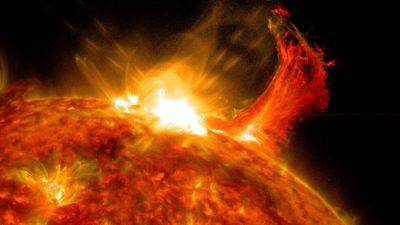
Solar flare erupts on Sun, detects NASA; blackouts over Australia, Solar storm likely
Despite multiple close calls, we have been quite lucky when it comes to solar storms. Even as multiple solar flares have erupted over the last 10 days, only one released a coronal mass ejection (CME) that made its way to the Earth. However, things can now change with the latest eruption that took place in the sunspot region AR3452. The NASA Solar Dynamics Observatory detected the eruption, and as per reports, it took place on the eastern limb of the Sun. If there was any CME directed towards the Sun, there would be another solar storm event in the next 48 hours.
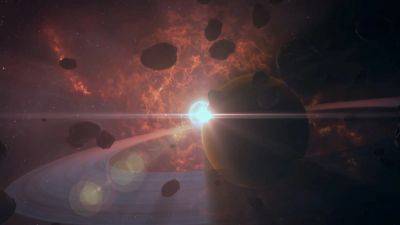
Asteroid to come closer than the Moon! NASA reveals details of close approach
To discover, monitor and study asteroids in space, NASA has several space telescopes and ground-based observatories in place. These include the famous Hubble Space Telescope and the new James Webb Space Telescope. Moreover, spacecraft such as Dawn, OSIRIS-REx, and Hayabusa2 have also helped in studying these ancient space rocks. As of now, there are 1,298,210 known asteroids in space and while not all of them are dangerous, some of them can get knocked off their orbit due to interaction with a planet's gravitational field such as Jupiter, and head towards Earth for potential impact. Therefore, to remove the uncertainties around the asteroid's approach, it is imperative that we track them.
